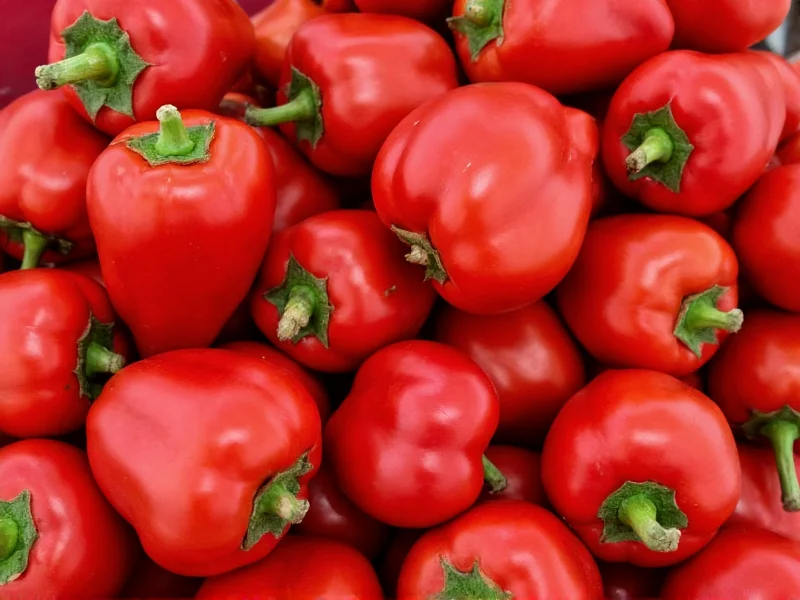Understanding what paprika is for begins with recognizing its dual role in the kitchen as both a flavor enhancer and visual element. This versatile spice, derived fromCapsicum annuum peppers, has been a culinary staple for centuries across multiple cultures. Whether you're wondering what paprika is used for in traditional Hungarian cuisine or how to incorporate it into everyday American cooking, this guide explores the comprehensive applications of this essential spice.
The Essential Culinary Functions of Paprika
When examining what is paprika for, we must consider its two primary functions in cooking. First, as a seasoning agent, paprika contributes a distinctive flavor profile that ranges from sweet and mild to hot and smoky, depending on the variety. Second, as a natural coloring agent, it imparts a vibrant red-orange hue that enhances the visual appeal of dishes without artificial additives.
Chefs and home cooks alike rely on paprika for its ability to transform ordinary dishes into visually stunning and flavorful creations. Unlike many spices that lose potency when exposed to heat, paprika maintains its color properties even when cooked, making it invaluable for dishes that require both cooking and visual presentation.
Types of Paprika and Their Specific Culinary Applications
Not all paprika serves the same purpose in the kitchen. The specific variety determines what paprika is for in particular recipes. Understanding these differences is crucial for proper usage:
| Type of Paprika | Flavor Profile | Primary Culinary Uses |
|---|---|---|
| Sweet Paprika | Mild, slightly sweet, earthy | Traditional Hungarian goulash, deviled eggs, potato salads, light-colored sauces |
| Hot Paprika | Spicy with varying heat levels | Spicy chorizo, Hungarian fish soup, spicy meat rubs, Southwest cuisine |
| Smoked Paprika (Pimentón) | Deep smoky flavor, ranging from sweet to hot | Spanish paella, grilled meats, barbecue rubs, roasted vegetables, bean dishes |
| Hungarian Paprika | Complex, rich, varying heat levels | Authentic Hungarian dishes, stews, soups, meat marinades |
Regional Culinary Traditions Featuring Paprika
When exploring what is paprika for across global cuisines, certain regional applications stand out as particularly significant. Hungarian cuisine arguably makes the most extensive use of paprika, with some dishes containing multiple varieties. Traditional Hungarian goulash, chicken paprikash, and fisherman's soup all rely on paprika as a foundational ingredient rather than merely a seasoning.
Spanish cuisine features smoked paprika (pimentón) prominently in dishes like paella, patatas bravas, and chorizo sausage. The smoking process gives Spanish paprika its distinctive flavor that's become essential to Iberian cooking traditions.
In American cooking, paprika serves multiple purposes from adding color to deviled eggs and potato salads to providing depth in barbecue rubs and spice blends. Many commercial meat rubs and seasoning mixes contain paprika primarily for its coloring properties, though quality blends leverage its flavor contributions as well.
Practical Applications: What Is Paprika For in Your Kitchen
Understanding what paprika is used for in cooking requires practical knowledge of its applications. For home cooks wondering what is paprika for in everyday recipes, consider these specific uses:
- As a finishing spice: Sprinkle sweet paprika over finished dishes like deviled eggs or hummus for visual appeal and subtle flavor enhancement
- In dry rubs: Combine with other spices to create flavorful coatings for meats before grilling or roasting
- For color enhancement: Add to light-colored sauces, soups, or salad dressings to improve visual appeal without overwhelming flavor
- In traditional recipes: Essential for authentic Hungarian, Spanish, and Portuguese dishes where it serves as a primary flavor component
- As a heat alternative: Use smoked paprika to add depth to dishes when you want flavor without spiciness
Maximizing Paprika's Potential in Cooking
To fully leverage what paprika is for in your cooking, proper usage techniques matter. Unlike some spices that benefit from early addition during cooking, paprika's delicate flavor compounds can become bitter when exposed to high heat for extended periods. For best results when considering what is paprika used for in recipes:
Add paprika toward the end of cooking for maximum flavor impact, or bloom it in warm oil at the beginning to release its essential oils without burning. When using smoked paprika for what paprika is for in barbecue applications, pair it with complementary spices like garlic powder, onion powder, and cumin for balanced flavor profiles.
Proper storage also affects what paprika is for in your kitchen long-term. Keep paprika in an airtight container away from light and heat to preserve both its vibrant color and flavor compounds. Quality paprika should maintain its properties for 1-2 years when stored properly, though peak flavor occurs within the first 6-12 months.
Common Substitutions When You Need to Know What Paprika Is For But Don't Have It
When exploring what is paprika for in recipes but lacking this specific spice, suitable substitutions depend on which aspect you need to replace. For color without significant flavor change, tomato paste or red bell pepper powder works well. For heat without smoke, cayenne pepper (use sparingly) can substitute for hot paprika. For smokiness without heat, consider adding a tiny amount of liquid smoke to your dish.
Understanding what paprika is for helps determine the best substitution. If a recipe primarily uses paprika for color (like in deviled eggs), the substitution needs to address visual appeal. If the recipe relies on paprika for its distinctive flavor (like in Hungarian goulash), the substitution must match that flavor profile more closely.











 浙公网安备
33010002000092号
浙公网安备
33010002000092号 浙B2-20120091-4
浙B2-20120091-4